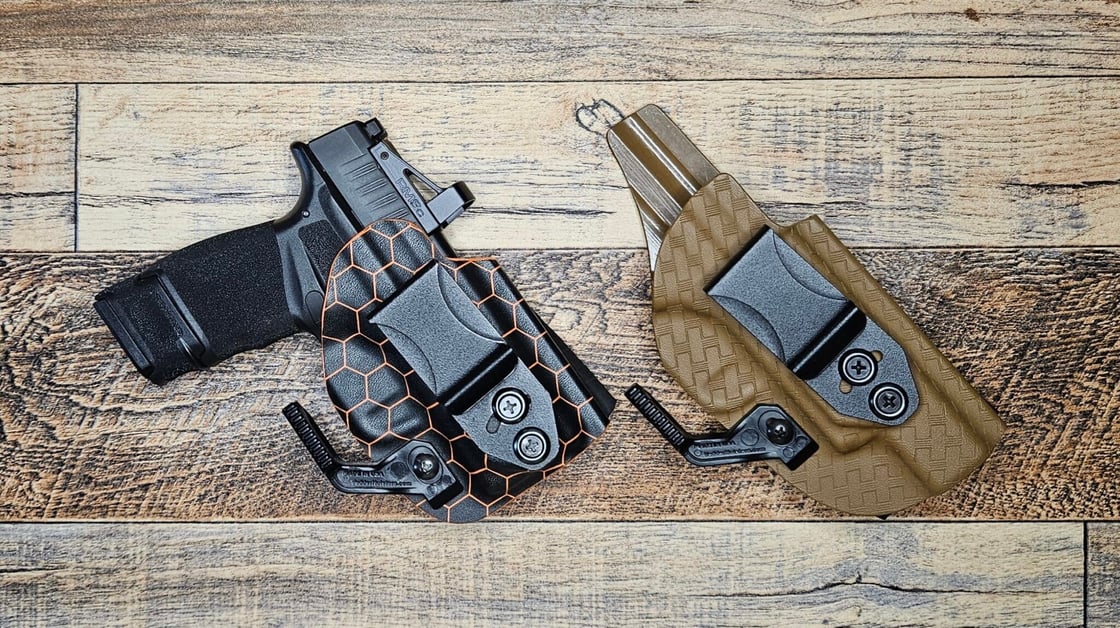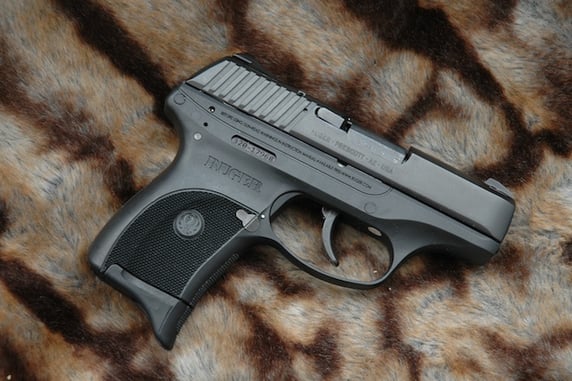When it comes to concealed carry, every detail matters, from the firearm you choose to the accessories that enhance your carry experience. Among these, holster claws and foam wedges play pivotal roles in improving both comfort and concealment. This guide delves into the specifics of what a holster claw is, explores the utility of a foam wedge, and discusses how pairing these two can create the perfect concealed carry setup.
Table of Contents
What is a Holster Claw?
A holster claw is a vital accessory for anyone who practices concealed carry with an inside-the-waistband (IWB) holster, particularly in the Appendix Carry position. Also known simply as a “claw” or “wing,” this component plays a crucial role in enhancing the concealment of the firearm without compromising accessibility or comfort.
Design and Functionality of a Holster Claw
The design of a holster claw is relatively simple but highly effective. Typically made from durable materials such as polymer or metal, the claw attaches to the holster on the side adjacent to the grip of the firearm. It extends slightly outwards and presses against the inside of the wearer’s belt.

The main purpose of a holster claw is to manipulate the position of the firearm to minimize its visibility under clothing—a concern commonly referred to as “printing.” Printing can be a significant issue for concealed carry practitioners, as the outline of a firearm visible through clothing can defeat the purpose of carrying concealed.
How a Holster Claw Works

The mechanics of how a holster claw works are rooted in leverage and tension. When attached to a holster, the claw exerts outward pressure against the belt. This pressure creates a counterforce that pulls the grip of the firearm closer to the body. The result is a rotation of the firearm towards the wearer’s abdomen, which significantly flattens the profile of the grip against the body, reducing its visibility even under fitted clothing.
Advantages of Using a Holster Claw
The advantages of using a holster claw are numerous, especially for those who carry larger or more angular firearms that are inherently more difficult to conceal. Here are a few key benefits:
- Improved Concealment: By reducing the firearm’s tendency to tilt away from the body and print under clothing, the holster claw makes it easier to conceal a firearm discreetly.
- Enhanced Comfort: By aligning the firearm closer and more securely against the body, the claw can also enhance comfort, as there is less movement of the firearm within the holster.
- Versatility: Holster claws are compatible with many types of IWB holsters and can be adjusted according to the wearer’s belt and body type, providing a customizable experience.
Considerations When Choosing a Holster Claw
When selecting a holster claw, it is important to consider the type of firearm and holster you use. The claw must be compatible with your holster in terms of attachment and size. Additionally, consider the material and build quality of the claw to ensure durability and functionality.
In conclusion, a holster claw is an indispensable tool for anyone looking to enhance their concealed carry setup. By effectively reducing printing and increasing comfort, the holster claw not only boosts the practicality of carrying concealed but also contributes to the overall security and confidence of the carrier.
Understanding the Foam Wedge
The foam wedge for holster is another essential accessory for enhancing the comfort and efficacy of inside-the-waistband (IWB) holsters, particularly in the context of concealed carry. While the holster claw focuses on reducing printing by adjusting the grip’s position, the foam wedge tackles comfort and improves the angle of the entire holster.
Design and Function of a Foam Wedge
A foam wedge is exactly what it sounds like—a wedge-shaped piece of foam that attaches to the back of the holster, usually at the lower end where the muzzle of the firearm sits. The primary material is typically a soft, durable foam that can compress under pressure but has enough resilience to provide consistent support over extended periods.

The wedge serves a dual purpose: it tilts the top of the firearm toward the user’s body, which enhances concealment by aligning the firearm more closely with the wearer’s torso, and it creates a buffer between the holster and the wearer, adding comfort.
How a Foam Wedge Enhances Carry
- Improved Concealment: By tilting the firearm towards the body, the foam wedge helps minimize the outline of the firearm under clothing. This is particularly useful for those who wear tighter-fitting clothes where even minimal printing could be noticeable.
- Increased Comfort: The wedge provides a cushion against the body, preventing the hard edges of the firearm or holster from digging into the skin. This is invaluable during extended periods of wear, especially when the wearer is seated or bending over, as it reduces hot spots and pressure points that can cause discomfort or even bruising.
- Better Holster Positioning: Besides comfort and concealment, the wedge helps stabilize the holster in an optimal position for draw efficiency. It counters the tendency of the holster to shift or tilt outward, ensuring that the firearm remains in a consistent position.
Choosing and Using a Foam Wedge
Selecting the right foam wedge involves considering the size and shape of both the holster and the firearm, as well as the wearer’s typical activities and attire. The wedge should not be so large as to be cumbersome or alter the holster’s intended positioning drastically. It’s also crucial to attach it correctly—usually via adhesive Velcro or a similar mechanism—ensuring it stays securely in place throughout its use.

Regular adjustment and replacement are necessary to maintain its effectiveness, as the foam can compress over time. Ensuring that the wedge maintains its shape and placement will help prolong its life and effectiveness.
In essence, a foam wedge is a simple yet highly effective tool for anyone looking to improve their comfort and concealment in concealed carry situations. Its use, especially in conjunction with a holster claw, can significantly enhance the overall experience of carrying a concealed firearm by addressing common issues faced by carriers in terms of comfort, concealment, and draw readiness.
Combining Holster Claw and Foam Wedge
When used together, a holster claw and wedge complement each other to provide an optimal carrying experience. The claw ensures the firearm’s grip stays close to the body, enhancing concealment, while the wedge increases comfort and aids in the overall positioning of the holster. This combination not only improves the functionality of a concealed carry setup but also boosts the wearer’s confidence in their ability to carry discreetly and comfortably throughout the day.
For anyone serious about concealed carry, investing in a quality holster equipped with both a holster claw and wedge can make a significant difference in their daily carry comfort and concealment. Whether you are a seasoned carrier or new to the world of concealed firearms, these accessories can help you achieve a more secure and less obtrusive fit.
Firearm Safety Tip: Always ensure your holster is specifically designed for your firearm model to maintain safety and functionality. Proper fit prevents Negligent discharges and ensures easy access when needed.


![[WATCH] Bodycam Footage Shows Deputies Arresting Florida Shooting Spree Suspect](https://imagedelivery.net/sbm_lYeJbALkepJgtmRD5w/concealednation.org/2023/02/body-cam-footage-2.jpg/w=728,h=381)







![[CCW IN ACTION] Store Owner Makes Decision To Carry Firearm 8 Years Ago — Paid Off Big Time](https://imagedelivery.net/sbm_lYeJbALkepJgtmRD5w/concealednation.org/2015/09/lehigh-acres-robbery.jpg/w=728,h=381)



